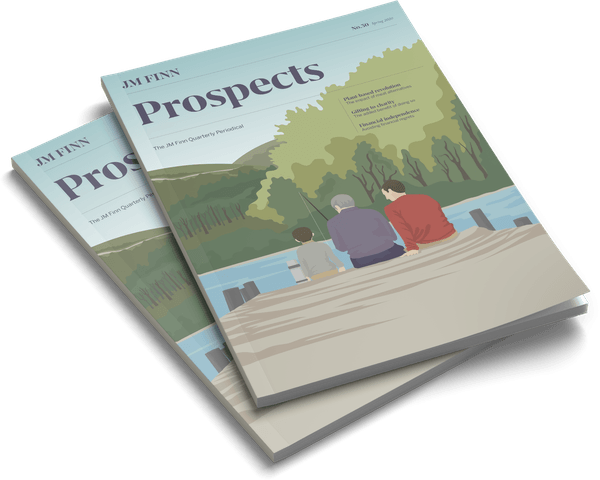The universe of investable funds to a UK investor is enormous and identifying the correct one that will fit within a portfolio designed to meet a client’s specific investment mandate would be too large a task for an individual investment manager.
To assist our investment managers we break the universe down into sectors and have a designated sector specialist who is responsible for coming up with a preferred list of funds within the sector, which is then monitored on a regular basis.
It is important to note, that at JM Finn we offer each investment manager a degree of autonomy when it comes to managing their clients’ assets, which allows us to offer a highly personalised service with the aim of meeting each client’s individual investment objectives. With this in mind, there is no obligation for anyone to buy a preferred fund but it does act as a guide, can help with the decision- making process and certainly allows for a good deal of internal debate, which adds to our collaborative investment approach. It is also worth noting that each sector specialist might approach the due diligence in their individual fashion, but the goals are the same: to provide a suitable list of funds that supplement our direct stock investments, particularly for niche or specific geographic exposure.
Before a fund can be added to the preferred list, either the fund house or individual fund needs to be approved by our Permitted Investments Committee, which will determine whether the fund provider is suitable. In effect, this is a second check to ensure the due diligence has met all requirements. A sector specialist and/or investment manager can ask for a fund house or fund to be included in this list, in which case the committee will perform due diligence on the company or fund and make a decision.
Typically, the sector specialist will look to narrow their universe by filtering funds on a variety of quantitative metrics, these may include:
- Compliance with regulatory permissions — Distributor/Reporting status (which allows off shore funds to be purchased in the UK)
- Fund Size
- Costs
- Fund investment style
- Fund Performance vs. the relevant benchmark
If the fund screens well then the fund manager is assessed via a face-to-face meeting. There were close to 150 such meetings held internally in 2019.
The meeting will usually start with questions about the manager’s background, the team structure and the resources available. A biography of the fund manager and their teams are normally in the fund’s factsheet, but further details are usually required. If the fund manager is at the end of their career there can be potential succession issues; too young and their experience of markets in extreme market conditions can be limited. There are some investment houses where all the investment decisions are made by one person, while there are others were there is a team approach. Some fund managers employ their own analysts, while others will bring in resources of sell side brokers.
I will also be interested to know how the team is remunerated. Is this based on fund performance or funds under management? Is the fund manager paid in cash, new units in the fund or in share options? This can give us an indication if the team is going to remain in place and ensure an alignment of interests. Some fund managers may have similar investment styles, but rarely are their structures and resources the same. There is no right answer to any of these questions, whilst the answers will vary depending on where the fund is invested. What is important is does the investment house provide the necessary level of support for their fund managers and their teams?
The second part of the meeting may look to get a thorough understanding of the fund manager’s investment philosophy. Does the fund take a top down approach, using national or global economics or does it use a bottom up approach, which means the fund ignores economics and picks stocks purely on their attractiveness. In addition, some fund managers will adopt a style or thematic approach. We will also be interested to know on what criteria does the fund choose investments; some examples might include price earnings ratio, net asset value, earnings growth and dividend yield.
I then might explore the fund’s investment process, which normally starts with an explanation of how they screen their universe to reduce the number of holdings down to a more manageable number, much like our own process for finding new funds. What I really look for here is an understanding of how investment decisions are made. This obviously links in with the team structure and philosophy mentioned above. This will then lead into portfolio construction and will normally involve information on stock weightings, price targets, trading strategies and number of holdings held in the fund. I am also interested to know how the portfolio is monitored, to ensure the process is consistently applied.
JM Finn’s fund sectors:
- Absolute Return
- Asia
- Bonds
- Emerging Markets
- ESG
- Europe
- Financials
- Global
- Healthcare
- Infrastructure
- Japan
- Private Equity
- Property
- Technology
- UK Growth
- UK Income
- US
Fund performance is clearly an important issue and understanding how it has performed in different market conditions is paramount and needs to be consistent with the investment style.
Further areas to examine might involve discussing portfolio management, risk monitoring, the use of derivatives, hedging, turnover, fund size restrictions, country/sector weightings and the availability of different classes of unit. And of course ensuring we have a complete understanding of the costs, not just the annual management fee but the underlying fund costs too, are an essential part of any due diligence.
Nothing beats meeting a fund manager face-to-face and seeing how they answer our questions and, importantly, how those answers might change over time.
Illustration by Subin Lee



